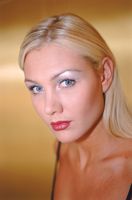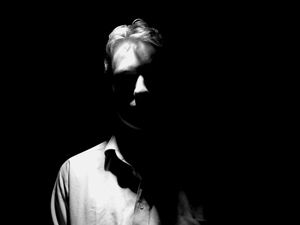- Sale
- 360 Degree Photography
- Battery and Battery Grip
- Backgrounds Even Color
- Backgrounds with Print
- Background Systems
- Cameras
- Camera Accessories
- Camouflage
- Continuous and Videolight
- Filters, Converters and Rings
- Photo frames
- Clamps and Adapters
- Cases and Bags
- Bulbs
- LED Lighting
- Magnifying Glasses
- Macro Photography
- Microphones
- Microscopes
- Night Vision Devices
- Shooting Tables and Tents
- Outdoor and Survival
- ID Photo Systems
- Flash Umbrellas
- Printers
- Reflectors
- Reflectors and Snoots
- Riflescopes
- Rigs Sliders and Stabilizers
- Camouflage Hides
- Smartphone Accessories
- Soft Boxes and Beauty Dishes
- Speedlite Camera flashes
- Spotting scopes
- Tripods and Ballheads
- Strobist
- Studio Accessories
- Studio Flashes and Kits
- Tecco Ilford Print Media
- Telescopes
- Trigger Sets
- Binoculars
- Thermal Imaging
Professional Studio Photo's... Within Everyone's Reach!

Why use Studio Equipment?
Previously, studio photography used to be an expensive business. Due to this, this kind of photography was relatively uncommon to photographers. Nowadays, a professional photo studio is very affordable and thus, quite common. There are a number of products available for personal photo studios and this product range can be somewhat overwhelming. Below is a brief explanation of the terminology and some of the basic products available for a photo studio.
Reflection and Shadows


The strength of a shadow is determined by the power of the light source, the distance to the subject and the type (direct or indirect) of light used.
Similar to the effect of the clouds on the sunlight and ultimately, everyday shadows, a diffuser, used in conjunction with a studio flash, distributes the light evenly by bouncing it off the full subject,
The first example shows the subject lit by 1 studio flash called the main light. This is evident by the long and sharp shadow that can be seen in the photo.
The second example shows the subject lit by two flashes, each using a softbox diffuser to distribute the light more evenly. The second flash, known as the “fill light”, lightens the shadows on subject, which can be seen in this example. Because of this, most flash kits contain two flashes, two diffusers (softbox or umbrella) and two light stands, which covers most of your basic studio photography needs.
Additional Lighting

Additional lighting can be used to enhance a background. With the use of additional flashes, light can be distributed evenly to eliminate shadows or create a gradient effect.
For portrait shooting, a third light, known as an "effect light", is often used as a hair light to create more depth in the portrait, as shown in example 3.
Diffusors
 Diffusors, such as a softbox or a lighting umbrella, are often included in flash kits and aim to spread light over a subject, evenly. Diffusors also reduce reflections on faces and glass objects.
Diffusors, such as a softbox or a lighting umbrella, are often included in flash kits and aim to spread light over a subject, evenly. Diffusors also reduce reflections on faces and glass objects.
- A softbox is the most commonly used light diffusor. Located inside the softbox is a reflecting silver layer, which bundles the light before it is emitted forward through the diffuser.
- Alternatively, a lighting umbrella also known as an octabox, can be used to evenly spread light across a subject. The main advantage of an umbrella diffuser is the little time it takes to set it up, making it ideal for a portable studio. Compared to a softbox, a lighting umbrella scatters more light reducing its efficiency. However, turning the flash’s power up, or repositioning it closer to the subject can increase the quality of lighting.
» For information on how to set up an octabox, please click here.
Using Reflectors
 Reflectors are one of the most widely used tools in studio photography. You can use them to lighten up shadows, or to reflect a slightly colored light onto the subject. They also enable you to make the best use of available daylight, when you don't want to use lighting equipment.
Reflectors are one of the most widely used tools in studio photography. You can use them to lighten up shadows, or to reflect a slightly colored light onto the subject. They also enable you to make the best use of available daylight, when you don't want to use lighting equipment.
How much Power do you need?
For portrait shooting or small product photography a 100-150W flash head can be used. For shooting a whole person, 200 W is a desired minimum. For larger groups and objects, 400W flash units are advisable and for very large groups of people, 800W or more is the best choice. It is always possible to reduce the flash power on a unit when needed.
Flash Light vs. Continuous Lighting
“What you see is what you get” with continuous lighting. When you look at your setup, you view the subject exactly how it will appear in the photo. In addition, you can record product videos with continuous light, which is not possible with a studio flashlight. However, continuous lighting is often hard to use when shooting people. The continuous stream of light makes people to squint and causes their pupils to shrink.
Usually, studio flash units have a slightly higher light output compared to continuous light and therefore produce a more natural looking photograph. Flash lights don’t necessarily required the use of a tripod, because with the flash, the photo is less sensitive to vibration.
» For information on how to replace the flashtube, please click here.
CRI-Value
When you are looking for certain lighting, like LED, you’ve probably seen CRI a couple of times. But what does CRI really mean? Please click here for more information about CRI-value.
Which Camera do I use?
It is not necessary to have a top-of-the-range camera. Any camera that lets you enter the shutter speed, aperture and ISO manually is suitable for studio photography. A good starting point is to set ISO value on 100 and the shutter speed on 1/125. You can then experiment with the aperture and power setting on the flash head to find the desired lighting values. Alternatively, a flash light meter can be used to quickly find the best values.
Setting up your Camera?
If you're using studio flashes, ISO100 is a good starting point, with the shutter speed set at 1/125. It is of course possible for you to experiment with these settings, but these standard settings will generally produce good results. The precise amount of light is a combination of the aperture setting on your camera and the power setting on the studio flash or flashes.
Combining Lighting Techniques

This picture shows a combination of various lighting ideas we described above.
The main light is near the camera and provides the most light for this scene. This is the first light you set up.
The fill light, at a lower power setting, provides depth. The optional reflector works as an effect light. Alternatively, it can be swapped with an additional flash.
The background flashes, also optional, eliminate all shadows in the background.
Additional Lighting Techniques
With studio lighting, the possibilities are endless. Just let your creativity run free!
A common lighting technique is low-key lighting, which can be seen in example 4. It makes a photo look interesting, mysterious or atmospheric. Few lights are used and there are a lot of shadows.
Example 5 shows the exact opposite. High key lighting has little to no shadows and gives the photograph a fresh, upbeat look. With a standard flash kit, you already have lots of lighting options to choose from to give the photo that particular look that you are looking for.


All these effects can be achieved with a standard flash kit. With two studio flashes you have plenty of options to create that particular atmosphere you're looking for.

How do I Connect a Studio Flash?
All studio flashes come with a sync-cable. You can connect this to your camera's "X-contact" connector. If your camera does not have this sync terminal, you can use a Hot Shoe adaptor, which sits on the camera’s hot shoe and contains a sync terminal. Further, it is also possible to use a wireless flash trigger set.
Flash Lighting through the use of Slave Mode
Another option to trigger the additional flash is through slave mode. Most studio flashes have a built-in slave sensor. Simply turn on the "Remote" button on your studio flash. As soon as the built-in sensor "sees" another flash, it triggers the flash at the same time. By using "slave" mode, you are able to trigger an unlimited number of flashes simultaneously.
The downside of this method is that it doesn't work for setups where the flashes are far apart. If one flash does not see the other one, the flash won’t go off.
» For more informtation on how to use the slave mode, please click here.
Go Wireless! The Remote Trigger Set

The most widely used solution to trigger studio flashes is a wireless trigger set. It is an easy, convenient and reliable way to trigger a studio flash. As it is a wireless device, there are no cords which climate the risk of tripping over, and it is impossible to obstruct the signal ensuring a triggered flash every time.
It is also possible to use additional receivers to extend the reach of the trigger flashes. In doing so, it is important to remember to set all trigger sets to the same channel in order to keep them in sync.
What is a Modeling Lamp?
All studio flashes come equipped with a modeling lamp. This is helpful for creating your composition. You can turn it on to see where shadows will be, if there are any undesired reflections, and so on. When you have found a setup that works, it is possible to turn off the flash tube that actually produces the flash, is called a flash tube.
Why use the Test Button?

There can be a number of reasons as to why a flash does not go off. The sync cable may not be connected properly, the distance between the transmitter and receiver is too big for slave mode to work, or the receiver for the wireless trigger set is set to a different channel to the transmitter. The test button helps you to find out what is wrong. By pressing the test button, a flash will be released. If this does not produce a flash, it is possible that the flash tube is worn out and needs replacing.
What is a Spigot Adapter?
Generally, all light stands and other lamp holders have a universal connecter called a Spigot. Almost all photo studio equipment is mounted onto stands using this universal connection allowing them to be used in a number of ways such as the foundation for a background support system.
Connection Plugs for Cameras
In some cases you might need to use a special output connection cable for your camera. It can be quite hard to find the right cable which is suitable for your camera. To find the correct cable, please click here.
